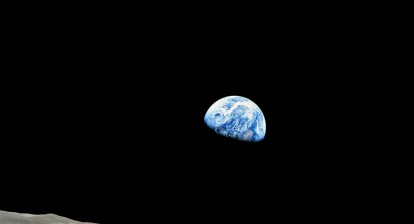SERIES: DIGITAL SUSTAINABILITY – Websites
What a long way we have come from those early websites that were hard coded by experts. Modern websites not only come with a host of options but most importantly, they can be easily constructed by anyone with a little bit of understanding about how the internet works.
And as we well and truly settle into the digital age, the website is going to be as ubiquitous as the corner-shop of the past. Except, now you can animate your products, show videos, and even sell online with a much lower cost than having a physical premises.
There is however another cost. That of the impact of your website on the climate, which, while not as humungous as other sources of carbon emissions, is still something to consider. Especially, as more and more of us spend more time on the internet for business and pleasure.
Our digital footprint is not just about the emails we send or the posts we make on social media. Buildings are required to house the hardware, data from computer networks, cloud services and digital applications – all of which also need energy. The IT sector already uses an estimated 7% of global electricity according to Greenpeace and this is projected to increase to 20% of all electricity produced, contributing 5.5% of the world’s carbon emissions.
And our own websites produce carbon as well. Median desktop page transfer size increased by 2165.5KB between 2015 and 2022 – an increase of 70%. Median mobile page transfer size increased by 1974KB during the same period – an increase of 127%.
Website Carbon tells us that each time you visit google.com, 0.09 g of CO2e is released into the atmosphere. Granted, this is not a lot. In fact, this is less than that emitted by the Greenpeace website. Both Google and Greenpeace are working towards using green energy. But that’s not the point here. Think of all the websites out there combined, with more coming up each day.
The first ever website was published 30 years ago, on August 6, 1991, by physicist Tim Berners-Lee at CERN in Switzerland. It was called the World Wide Web (W3). Today, it is estimated that 1.7 billion websites exist, (some sources say 1.88 billion see figure) but this number fluctuates, as new ones are launched, or others are closed. Even so, the world wide web is gigantic, and 4.5 billion people are now able to interact on the internet. Each day 576,000 new websites are created.

According to Website Carbon the average website produces 1.76g of CO2e per page view, which means that a site with 50,000 page views per month emits 1,056kg of CO2e annually. This is just the average. The more complex a website is, the more energy it needs to function. This means more carbon emissions, which are not just calculated by the size of a webpage but include the energy source used by the data centre, how much energy is used to transfer and process data, the efficiency of the user’s device, and how the webpage behaves as it loads. As we add on images and videos, webpages become heavier, less efficient and emit more carbon.
So, what can we do? The most important thing is to use a hosting company that uses green energy. Plus, move your own energy consumption to renewable energy as well.
There are also ways to make the webpage lighter. Images are perhaps the largest contributors to the weight of the website, so moving from JPEG and PNG to lighter formats such as SVG is one way of decreasing that size. Optimizing tools are also available that help you to reduce your image size – and many of these are free.
Quite a few companies that have finally ventured on the road to climate and environment consciousness are starting by making their websites as light as possible, with very few or no images, reduced use of colour and streamlining the coding used. Some websites hark back to the original website created in 1991 with just a white background and text, producing only 0.39kg of CO2e per year. There are still very few climate-friendly websites, but as people get more and more involved in digital sustainability, there is likely to be a change.
To me it seems though that we need to come up with more innovative ways of decreasing our digital carbon footprint (Read Stop sending thank you emails), and we are not there yet. In my opinion, the trend of making websites completely bare is in itself an unsustainable trend. It won’t catch on and it won’t last. It is very well for Elon Musk and Volkswagon to have ONE of their websites as lighter versions using less electricity, but their other websites continue along the same lines. We need to come up with better and inventive ways of ensuring that our digital life does not have the same results as our fossil fuel consumption did.
Almost 1,400 individuals and companies (including Google) have signed the Sustainable Web Manifesto since 2019, committing themselves to create a greener and sustainable internet. But what does this really mean? Are we all going to start creating starkly bare websites? I am not so sure. What I do know is that as more and more people get access to the internet, and more people create their own websites, this is a good time to at least start the conversation about digital sustainability.







